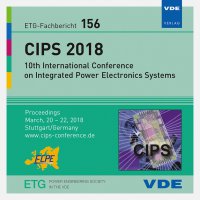Electrochemical Corrosion on Ceramic Substrates for Power Electronics – Causes, Phenomenological Description, and Outlook
Conference: CIPS 2018 - 10th International Conference on Integrated Power Electronics Systems
03/20/2018 - 03/22/2018 at Stuttgart, Deutschland
Proceedings: CIPS 2018
Pages: 7Language: englishTyp: PDF
Personal VDE Members are entitled to a 10% discount on this title
Authors:
Bayer, Christoph Friedrich; Diepgen, Antonia; Filippi, Thomas; Fuchs, Carmen; Wuestefeld, Sophie; Kellner, Simon; Waltrich, Uwe; Schletz, Andreas (Fraunhofer IISB, Schottkystr. 10, 91058 Erlangen, Germany)
Abstract:
Corrosion of the conducting material on ceramic circuit carriers requires free space in between the potting material and the ceramic substrate, where humidity may condensate. Within this microclimate, high concentrations of metal ions emerge and may form dendrites from one electrode towards the other. Substances containing sulphur or other corrosive elements act as a catalyst if a sufficient concentration is provided. Accompanying dendritic growth, partial discharge makes use of the free space as well as of the high electric field strength at the metallization edge. In this work, a phenomenological study on dendritic growth in droplets of different liquids, on different ceramic substrates is presented, correlated with time and leakage current. Furthermore, the worst case scenario on delaminated silicone gel with enclosed water is depicted to describe dendritic growth in between silicone gel and ceramic substrate. By comparing the outcome of different corrosion tests, a better understanding of the influencing factors of corrosion and their interactions can be achieved. Moreover, the different possible chemical educts and products are discussed in the scope of this work. Finally, a short summary on corrosion causes and corrosion protection is given.


